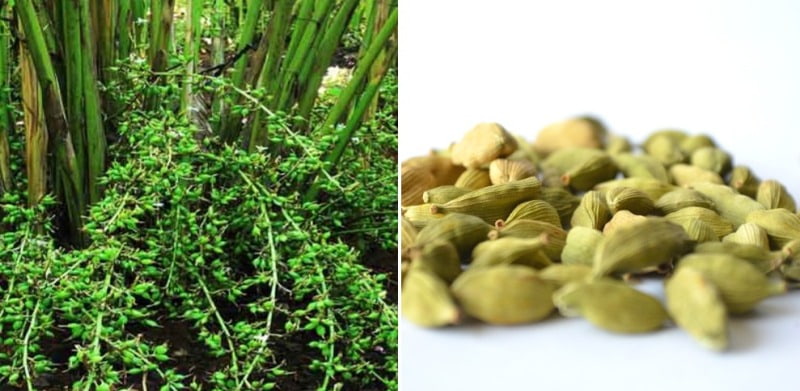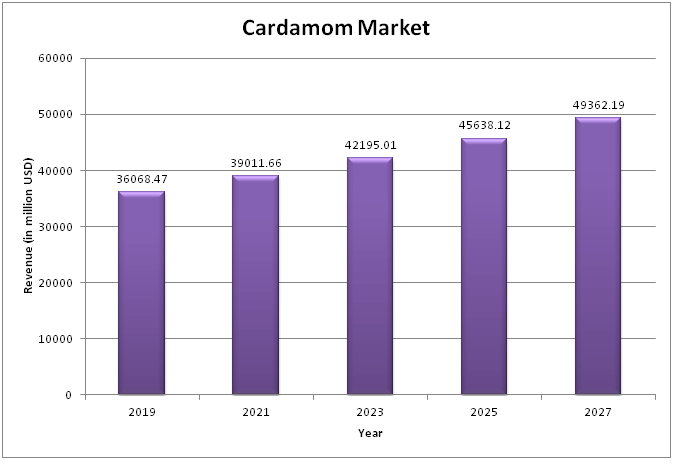Project Report For Cardamom Plantation
Introduction
Cardamom Plantation project report is as follows.
Cardamom is frequently referred to as the “Queen of Spices” and is known as “ILAICHI” or “ELAICHI” in India. Actually, it is a dried fruit that grows on a tall perennial plant.
It belongs to the family “Zingiberaceae.” Karnataka, Kerala, and Tamil Nadu are among the Indian states where cardamom is grown. Cardamom is one of the most expensive spices in the world due to its scent and flavor. One of the world’s largest cardamom growers in India. Cakes, curries, bread, and other foods can all be flavored with cardamom. Additionally, it is employed as a masticatory and to flavor coffee and sweets.
Cardamom is suggested to decrease high blood pressure over time because of its diuretic qualities. Its high antioxidant content promotes regular urination, which helps flush out water that has accumulated around key organs, and it assists in blood detoxification.

Cardamom is a common ingredient in Indian cuisine because it helps with digestion. Cardamom is a well-known digestive stimulant and carminative. This spice includes the essential oil menthone, which aids in easing gastrointestinal issues like treating stomach ulcers and other issues like acid reflux. Its anti-inflammatory qualities reduce stomach burning and even get rid of nausea.
Cardamom also aids in sinus clearance, making breathing easier. Cardamom’s antioxidants may be able to eliminate any infection, germs, or edema if you have a type of respiratory inflammation. It also defends cells against damage and lessens physiological inflammation, which can lead to chronic disorders. It can be thought of as a soothing agent that is abundant in anti-inflammatory components as a result.
Sample Project Report Of Cardamom Plantation
Get Completely Custom Bankable Project Report
Cardamom can be a lifesaver for skin that is prone to breakouts. and eliminates faults It controls sebum synthesis and clears all clogged pores. Its anti-inflammatory components help to balance out skin tone and get rid of skin irritation. the antioxidants in cardamom have eliminated the problem of chapped lips. Cardamom essential oils are frequently found in lip balms to bring flavor and comfort to the lips.
The two primary types of this spice are called Green and Black cardamom. True or small cardamom belongs to the green cardamom family and is scientifically known as “Elettaria cardamomum.” The scientific names for the black cardamom group, which also contains dark brown or big cardamom, are “Amomum costatum and Amomum subulatum.” The cardamom crop needs well-drained soils that are rich in organic matter (nutrients). Cardamom may thrive on soils with a pH range of 5.0 to 6.5, which is ideal for the growth of these plants.
Market Potential Of Cardamom Plantation
The cardamom market is projected to grow at a CAGR of 4% to reach USD 49362.19 million by 2027.
The market for cardamom is anticipated to grow quickly in the next years as a result of its exceptional features and wide range of uses. Tea can be spiced with cardamom, which may also help with heart issues. The crucial part that cardamom plays in Ayurvedic treatment is what is primarily fueling the expansion of this spice. Ayurveda is quickly growing in popularity as a way to address health-related difficulties, particularly in the Asia-Pacific region. Cardamom consumption is developing globally as a result of the growing demand for Ayurvedic treatments. The extensive usage of cardamom in the food and beverage industry as well as its capacity to enhance flavor are additional major drivers of the cardamom market’s rise.

The market for cardamom is expanding as a result of the food and beverage sector’s rapid global expansion. Population growth is a significant factor in the expansion of the cardamom market. The need for cardamom is growing as the population grows in households, the food and beverage business, and the medical sector, which is boosting sales of the spice, particularly in Asia-Pacific.
The climate is one of the most crucial aspects for any crop if you want to succeed. Cardamom flourishes in climates with temperatures between 10°C and 36°C and altitudes between 650mm and 1200mm above mean sea level, while annual rainfall ranges from 1,500mm to 4,000mm (mean sea level).

